USA and Germany Lasker Schachstiftung GK clinched the titles in S50 and S65, respectively, at the 2023 FIDE World Senior Team Championship.
Drama and excitement were dominating the final round of the Championship. At first sight, none of it should have happened, but chess is a sport, and what seemed certain was anything but.
The favourites were playing outsiders in the last round, and two of the four leading teams did confirm their status.
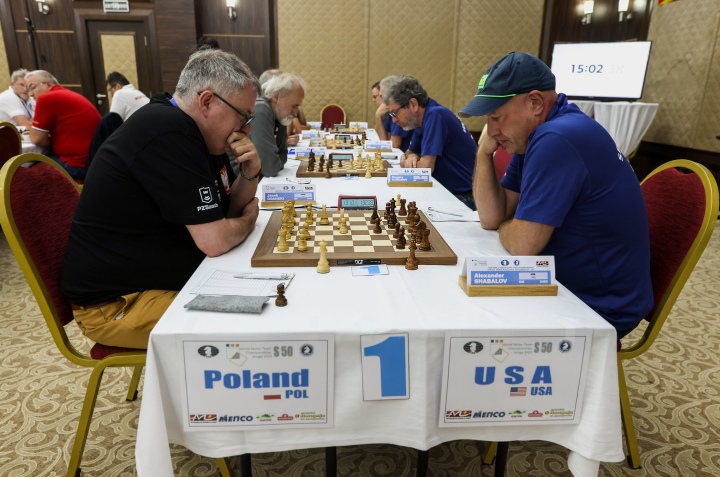
USA beat Poland 4-0, though not without some luck. Their win was never in question, but the Polish team should have scored at least a draw on board one.
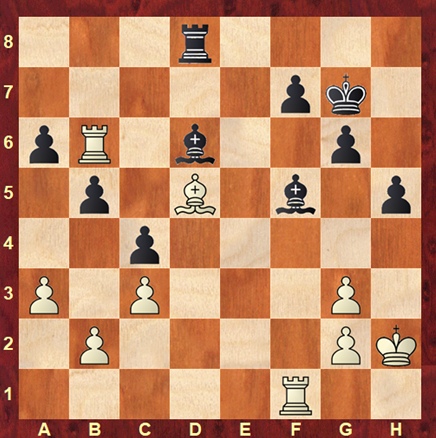
Black (Shabalov (2465)) sacrificed an exchange for sufficient compensation. The position is dynamically balanced, and in view of the threat …h4 White should have taken on a6 and then returned the exchange by taking on d6, with a likely draw.
Instead, Gdanski (2484) panicked and played 33.Rxf5?? gxf5 34.Kh3 Bc5, losing the bishop on d5.
On the other boards, the difference in class was too big in favour of the Americans. Kaidanov (2549) beat Sapis (2375), Novikov (2513) beat Sielicki (1956), and Yermolinsky (2419) beat Flis (1948), none of them experiencing major problems.
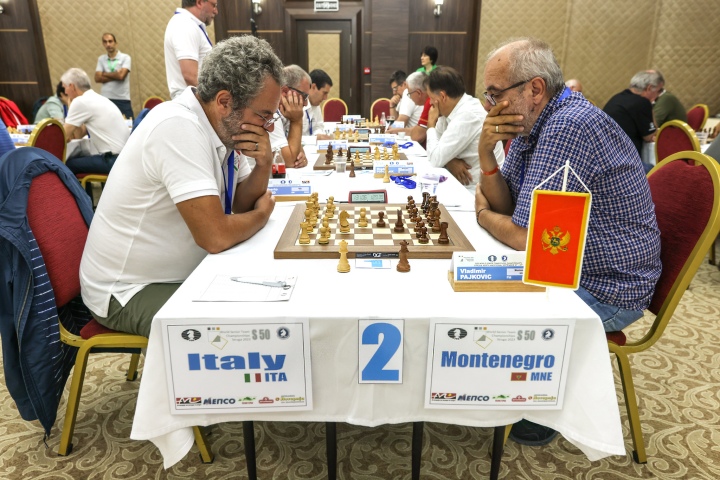
The drama unfolded on board two in the match between Italy and Montenegro. Italy were co-leaders with USA prior to the final round and, with a win in the match, were guaranteed a silver medal, with gold a possibility depending on the tie-break.
Things started well for Italy. David (2523) displayed exemplary technique to win a favourable double-rook endgame against Pajkovic (2412).
His win was followed by a win by Godena (2429), who pounced on a big blunder by Podlesnik (2289).
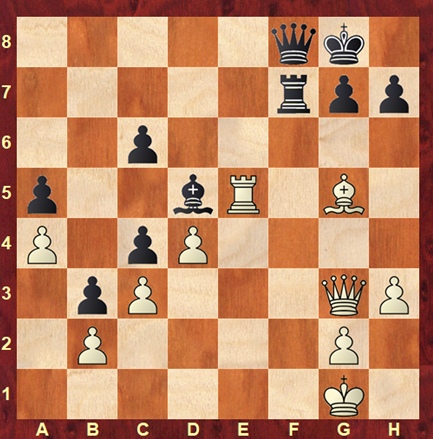
The game was balanced throughout, but here, White missed Black’s threat. He played 35.Qe3?? (better was 35.Qe1) Rf1 36.Kh2 Rf2 and the g2-pawn was lost, and with it, the game.
On board three Ortega (2410) was winning quickly after the opening. In a King’s Indian, he prepared well and obtained a decisive advantage by move 20 against Miljanic (2331).
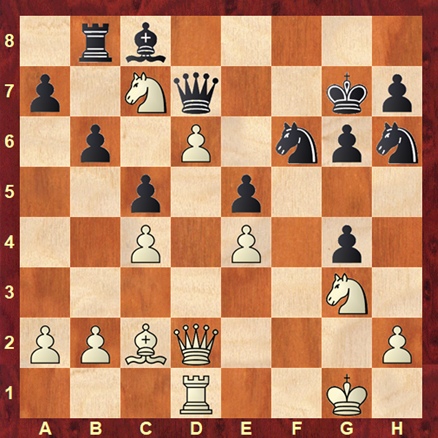
White had to switch the attack to the f-file with 26.Rf1 Nf7 27.Qf2, winning a piece in view of the tactic 27…Qd8 28.Qxf6! Qxf6 29.Ne8.
Instead of that, he played a move dissonant with the dynamic nature of the position: 26.a3?? and after the simple 26…Nf7 Black regrouped and was unexpectedly already winning. White no longer had a breakthrough, while Black was up in material. Miljanic went on to pick up the pawns on e4 and d6 and won the game.
This dramatic turnaround proved decisive for the Italian team. Instead of a comfortable victory, they were facing the prospect of not winning the match.
At first, it didn’t seem so. Borgo (2333) obtained a winning advantage against Nikac (2275).
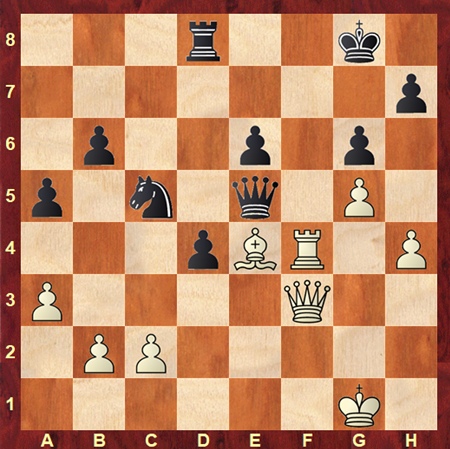
Here 27…Nxe4 28.Rxe4 Qc5 with the threats of …d3 and …Rf8 was decisive: Black is a pawn up, and White’s king is weak. Black missed this chance, and after 27…a4 28.Bd3 Nxd3 29.cxd3 was only marginally better.
In fact, here, he could have forced a draw by giving checks on e1 and d2. That would have won the match for Italy…
Completely unnecessary, Borgo transposed the game to a rook endgame where only he could be worse.
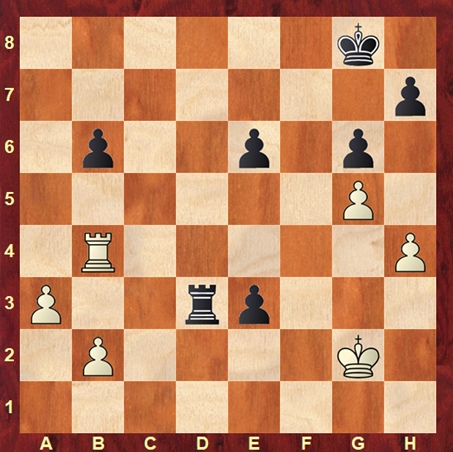
It was a critical moment in the game. Black had to find the only move 35…Rd5! with the idea of 36.Rxb6 Rf5! cutting off the white king and threatening …Rf2xb2 if the white rook leaves the b-file. Unfortunately for Italy, he missed it, and after a few further mutual inaccuracies, White converted his advantage into a full point.
Italy’s draw meant that USA were clear first, winning gold.
Now Italy could only hope on their competitors not winning their matches, but they were merciless.
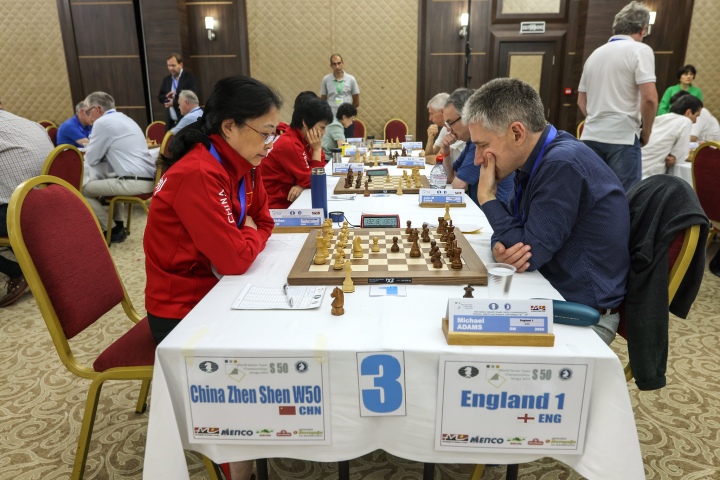
England whitewashed the Chinese women’s team China ShenZhen W50 (4-0). It was a dominating performance, as on all four boards, the English grandmasters didn’t give a single chance to the Chinese ladies.
In the Exchange Ruy Lopez, Adams (2662) as Black outplayed Liu Shilan (2083). Emms (2448) beat Chunhong Ning (2266) by breaking down Fort Knox in the French Defence. Flear (2405) won a brilliant miniature against Yun Guo (2244), and Davies (2354) strangulated Yanfeng An (2259) on the white side of a Fianchetto King’s Indian Defence.
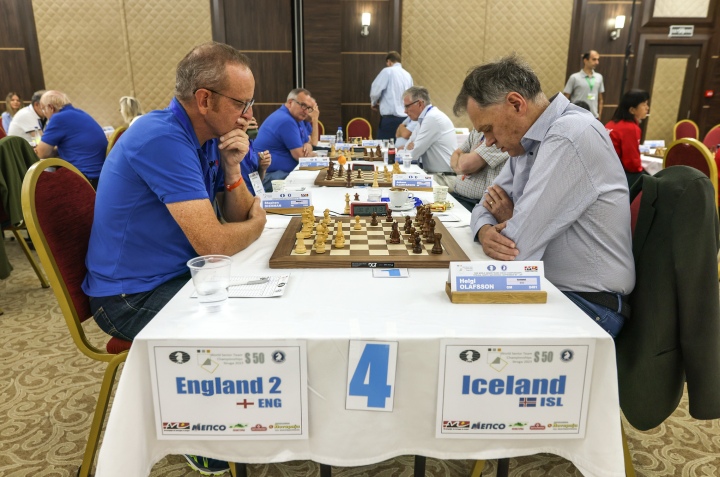
Iceland beat England 2, but it was a tight affair.
On board one, a sensation was brewing as Dishman (2304) sacrificed a piece against Olafsson (2491).
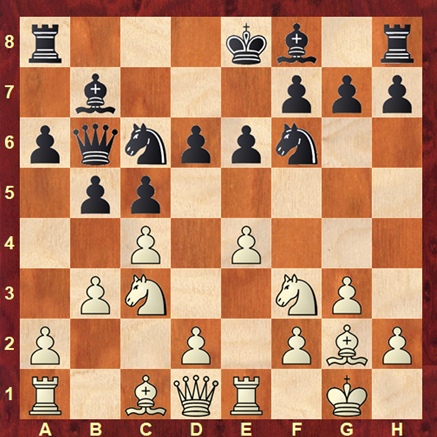
White played the thematic 10.Nd5! and after 10…exd5 11.exd5 Ne7 12.d4! was already winning, similar to some variations in the Sicilian Defence.
Olafsson defended to the best of his abilities, but that would not have saved him had White found the crushing blow in this position.
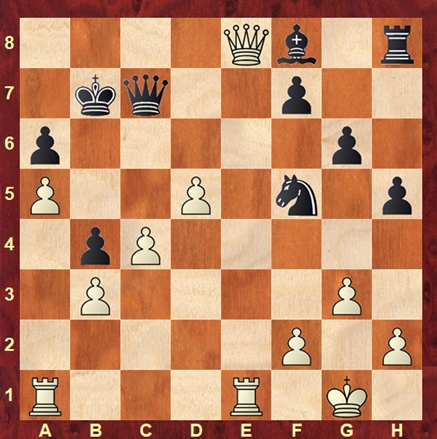
After 28.d6! Nxd6 29.Qe5 White is winning as Black is too disorganized; his king is weak, while White’s rooks dominate after Rad1. White missed this chance, and after the preparatory 28.Rad1? allowed Black to establish a dark-square blockade with 28…Nd6, which helped him save the draw.
Neither Hjartarson (2432) against Lewis (2238) on board two nor Arnason (2419) against Clark (2278) on board three could achieve much. The win for Iceland came on board four, but not without luck.
Thorallsson (2382) started building up an attack on the kingside against Stebbings (2257). Black’s position was resilient enough, and in the critical moment, he could even have taken over the initiative.
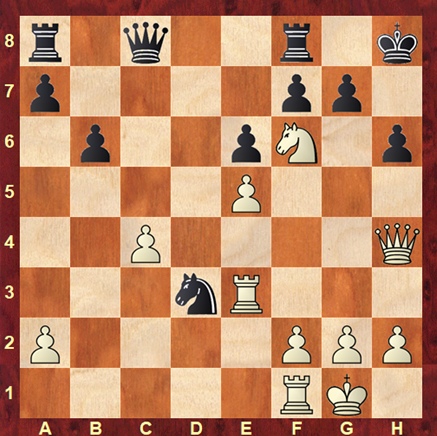
White’s last move was 22.Re3, and here Black could have played 22…Nxe5! 23.Rxe5 Qd8! regaining the pinned knight and eliminating any danger. In fact, the position would have transposed to a drawn double-rook endgame after 24.Rh5 Qxf6 25.Qxf6 gxf6 26.Rxh6 Kg7.
Black missed this chance and soon came under a strong attack after 22…Rd8? 23.Qe4 (23.Rh3 or 23.Nh5 were even stronger). The position was impossible to defend in a practical game, and White went on to deliver checkmate.
This meant that Iceland won 2.5-1.5, but as it turned out, this wasn’t enough – by winning 4-0, England overtook Iceland on a tie-break (board points) and finished second, with Iceland third. On the other hand, it was just enough to edge out Italy by half a point (on tie-break) to secure bronze, as all three teams had 14 match points.
The tournament ended in a tragedy for Italy, who finished fourth and without a medal. Who could ever imagine that sharing first place coming into the last round is not enough for a team to make it to the podium?
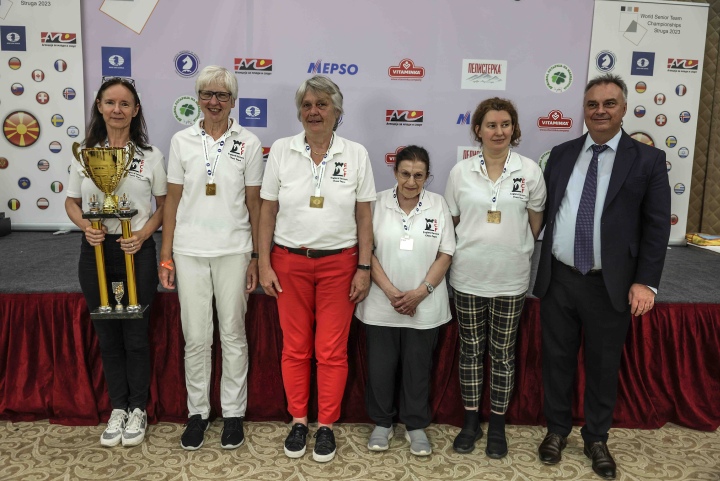
Incidentally, England’s 4-0 win directly affected the top finishers of the Women’s teams. England’s W50 team beat Finland 2.5-1.5 and overtook China ShenZhen W50 by a mere half a point to win gold and become World Champions!
In the S65 section, things went as expected, though even here, there was some drama before the dust settled.
Germany Lasker Schachstiftung GK drew their match with Germany and secured gold.
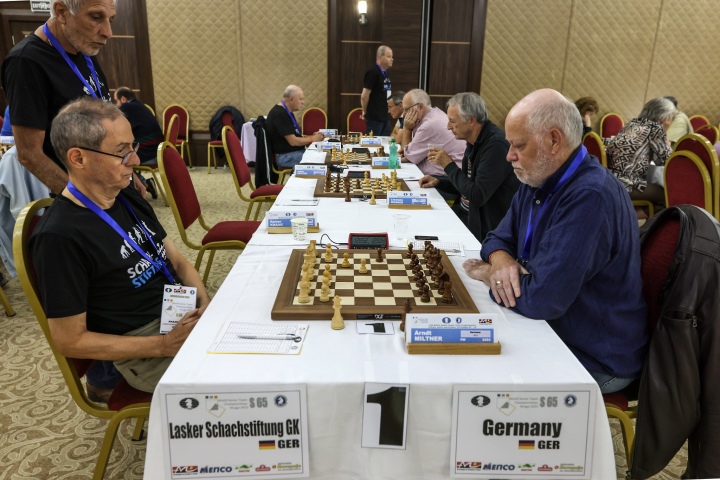
England 1 beat Switzerland 4-0 SG RIEHEN to claim silver.
Needing just a draw in the match with France, Slovakia was on the brink of a defeat. In case of France’s win they would have shared third place with a better second the second tie-break, their direct duel, which would have given “les bleus” the last-minute bronze.
And they were so close…
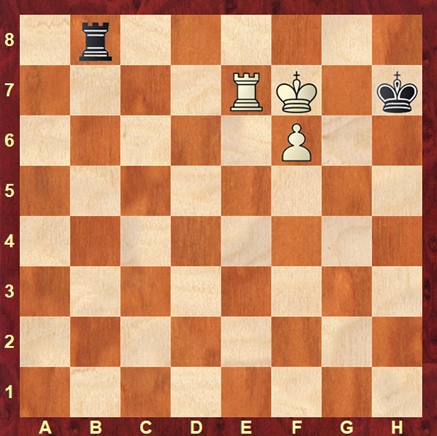
For a very long time, Ftacnik (2450) was trying to win a 3 vs 2 on the same wing rood endgame against Legky (2357). Eventually, they reached this theoretical endgame where Legky seemed confident to draw, playing …Ra8-b8.
Ftacnik sent his king to f5, in an attempt to prolong the game, at least. And then a miracle happened.
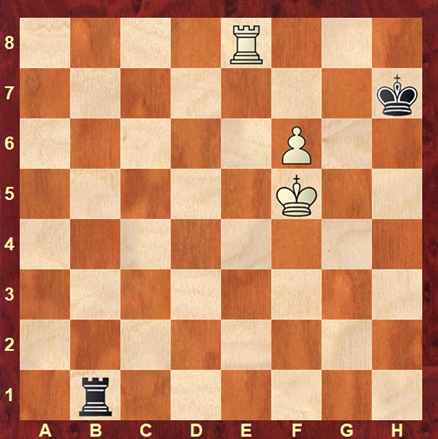
Instead of continuing with side checks as he has done before, Legky inexplicably played 95…Rf1??? after which 96.Ke6 was already winning for White – with no side checks, White easily builds a bridge to win.
An unbelievable change of fortunes! With this strike of luck, Slovakia secured bronze.

In the S65 section, Latvian women finished ahead of Germany, so these two teams won gold and silver, respectively.
The tournament finished with a lot of drama and excitement. The event demonstrated that senior players still have a shot in the locker and can produce some thrilling chess.

Congratulations to the winners, and until the next time!
Written by GM Alex Colovic
Photos: Mark Livshitz
Official website: seniorteam2023.fide.com/







